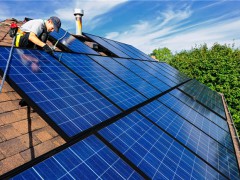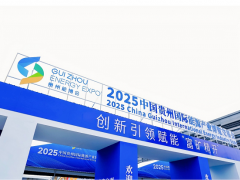據(jù)油氣新聞網(wǎng)5月27日報道,2023年,全球?qū)η鍧嵞茉吹耐顿Y將增至1.7萬億美元,太陽能投資將首次超過對石油生產(chǎn)的投資。
據(jù)IEA的一份新報告稱,由于全球能源危機引發(fā)的可負擔性和安全擔憂加強了支持更可持續(xù)能源選擇的趨勢,清潔能源技術(shù)的投資遠遠超過化石燃料支出。
根據(jù)IEA最新的《世界能源投資報告》,2023年,全球?qū)⒃谀茉捶矫嫱顿Y約2.8萬億美元,其中超過1.7萬億美元將用于清潔技術(shù),包括可再生能源、電動汽車、核能、電網(wǎng)、存儲、低排放燃料、效率提高和熱泵。
據(jù)該報告稱,剩余略高于1萬億美元的費用將用于煤炭、天然氣和石油。
在可再生能源和電動汽車的推動下,2021年至2023年間,清潔能源年度投資預(yù)計將增長24%,而同期化石燃料投資增長15%。
但該報告補充道,其中90%以上的增長來自發(fā)達經(jīng)濟體和亞洲,如果其他地方不加快清潔能源轉(zhuǎn)型,全球能源將面臨新的分界線的嚴重風險。
IEA表示,清潔能源的發(fā)展速度很快,比許多人意識到的要快。這在投資趨勢中很明顯,清潔技術(shù)正在從化石燃料中撤出。
IEA認為,現(xiàn)在每投資一美元在化石燃料上,就有大約1.7美元用于清潔能源。五年前,這一比例是一比一。一個突出的例子是對太陽能的投資,將首次超過對石油生產(chǎn)的投資。
以太陽能為主導(dǎo)的低排放電力技術(shù)預(yù)計將占發(fā)電投資的近90%。
消費者也在投資于更多電氣化的最終用途。據(jù)IEA的報告稱,自2021年以來,全球熱泵銷量實現(xiàn)了兩位數(shù)的年增長,而電動汽車銷量在2022年激增后,預(yù)計今年將躍升三分之一。
近年來,清潔能源投資受到多種因素的推動,其中包括經(jīng)濟強勁增長和化石燃料價格波動,這引發(fā)了對能源安全的擔憂。
據(jù)該報告稱,通過美國《通脹削減法案》等重大行動以及歐洲、日本等其他地方的舉措加強的政策支持也發(fā)揮了作用。
預(yù)計2023年上游油氣支出將增長7%,恢復(fù)到2019年的水平。投資超過疫情前的少數(shù)幾家石油公司大多是中東地區(qū)的大型國有石油公司。
報告稱,由于燃料價格上漲,許多化石燃料生產(chǎn)商去年獲得了歷史最高水平的利潤,但大部分現(xiàn)金流都用于分紅、股票回購和償還債務(wù),而不是回到傳統(tǒng)的供應(yīng)中。
盡管如此,化石燃料投資的預(yù)期反彈意味著,2023年,化石燃料投資將增加到國際能源署2050年凈零排放愿景中2030年所需水平的兩倍以上。全球煤炭需求在2022年達到歷史最高水平,今年的煤炭投資有望達到2030年凈零愿景所設(shè)想水平的六倍多。
數(shù)據(jù)顯示,2022年,石油和天然氣行業(yè)在清潔電力、清潔燃料和碳捕獲技術(shù)等低排放替代品上的資本支出不到其上游支出的5%。
這一水平與去年相比幾乎沒有變化——盡管一些較大的歐洲公司的份額更高。
清潔能源投資的最大缺口是新興經(jīng)濟體和發(fā)展中經(jīng)濟體。有一些亮點,例如印度對太陽能,巴西和中東部分地區(qū)對可再生能源的動態(tài)投資。
然而,許多國家的投資受到利率上升、政策框架和市場設(shè)計不明確、電網(wǎng)基礎(chǔ)設(shè)施薄弱、公用事業(yè)財務(wù)緊張以及資本成本高等因素的阻礙。
國際社會還需要做更多的工作,特別是在推動私營部門一直不愿冒險的低收入經(jīng)濟體的投資方面。
郝芬 譯自 油氣新聞網(wǎng)
原文如下:
Global spend on clean energy to hit $1.7 trillion in 2023:IEA
Global investment in clean energy is on course to rise to $1.7 trillion in 2023, with solar set to eclipse oil production for the first time.
Investment in clean energy technologies is significantly outpacing spending on fossil fuels as affordability and security concerns triggered by the global energy crisis strengthen the momentum behind more sustainable options, according to a new IEA report.
about $2.8 trillion is set to be invested globally in energy in 2023, of which more than $1.7 trillion is expected to go to clean technologies – including renewables, electric vehicles, nuclear power, grids, storage, low-emissions fuels, efficiency improvements and heat pumps – according to the IEA’s latest World Energy Investment report.
The remainder, slightly more than $1 trillion, is going to coal, gas and oil, it stated.
Annual clean energy investment is expected to rise by 24% between 2021 and 2023, driven by renewables and electric vehicles, compared with a 15% rise in fossil fuel investment over the same period.
But more than 90% of this increase comes from advanced economies and Asia, presenting a serious risk of new dividing lines in global energy if clean energy transitions don’t pick up elsewhere, the report added.
IEA said: "Clean energy is moving fast – faster than many people realise. This is clear in the investment trends, where clean technologies are pulling away from fossil fuels."
"For every dollar invested in fossil fuels, about $1.7 is now going into clean energy. Five years ago, this ratio was one-to-one. One shining example is investment in solar, which is set to overtake the amount of investment going into oil production for the first time," he added.
Led by solar, low-emissions electricity technologies are expected to account for almost 90% of investment in power generation.
Consumers are also investing in more electrified end-uses. Global heat pump sales have seen double-digit annual growth since 2021, while electric vehicle sales are expected to leap by a third this year after already surging in 2022, said the IEA report.
Clean energy investments have been boosted by a variety of factors in recent years, including periods of strong economic growth and volatile fossil fuel prices that raised concerns about energy security, especially following the war.
Enhanced policy support through major actions like the US Inflation Reduction Act and initiatives in Europe, Japan and elsewhere have also played a role, it stated.
Spending on upstream oil and gas is expected to rise by 7% in 2023, taking it back to 2019 levels. The few oil companies that are investing more than before the Covid-19 pandemic are mostly large national oil companies in the Middle East.
Many fossil fuel producers made record profits last year because of higher fuel prices, but the majority of this cash flow has gone to dividends, share buybacks and debt repayment – rather than back into traditional supply, it said.
Nonetheless, the expected rebound in fossil fuel investment means it is set to rise in 2023 to more than double the levels needed in 2030 in the IEA’s Net Zero Emissions by 2050 Scenario. Global coal demand reached an all-time high in 2022, and coal investment this year is on course to reach nearly six times the levels envisaged in 2030 in the Net Zero Scenario.
According to IEQA, the oil and gas industry’s capital spending on low-emissions alternatives such as clean electricity, clean fuels and carbon capture technologies was less than 5% of its upstream spending in 2022.
That level was little changed from last year – though the share is higher for some of the larger European companies.
The biggest shortfalls in clean energy investment are in emerging and developing economies. There are some bright spots, such as dynamic investments in solar in India and in renewables in Brazil and parts of the Middle East.
However, investment in many countries is being held back by factors including higher interest rates, unclear policy frameworks and market designs, weak grid infrastructure, financially strained utilities, and a high cost of capital.
Much more needs to be done by the international community, especially to drive investment in lower-income economies, where the private sector has been reluctant to venture.
免責聲明:本網(wǎng)轉(zhuǎn)載自其它媒體的文章及圖片,目的在于弘揚石化精神,傳遞更多石化信息,宣傳國家石化產(chǎn)業(yè)政策,展示國家石化產(chǎn)業(yè)形象,參與國際石化產(chǎn)業(yè)輿論競爭,提高國際石化產(chǎn)業(yè)話語權(quán),并不代表本網(wǎng)贊同其觀點和對其真實性負責,在此我們謹向原作者和原媒體致以崇高敬意。如果您認為本站文章及圖片侵犯了您的版權(quán),請與我們聯(lián)系,我們將第一時間刪除。







